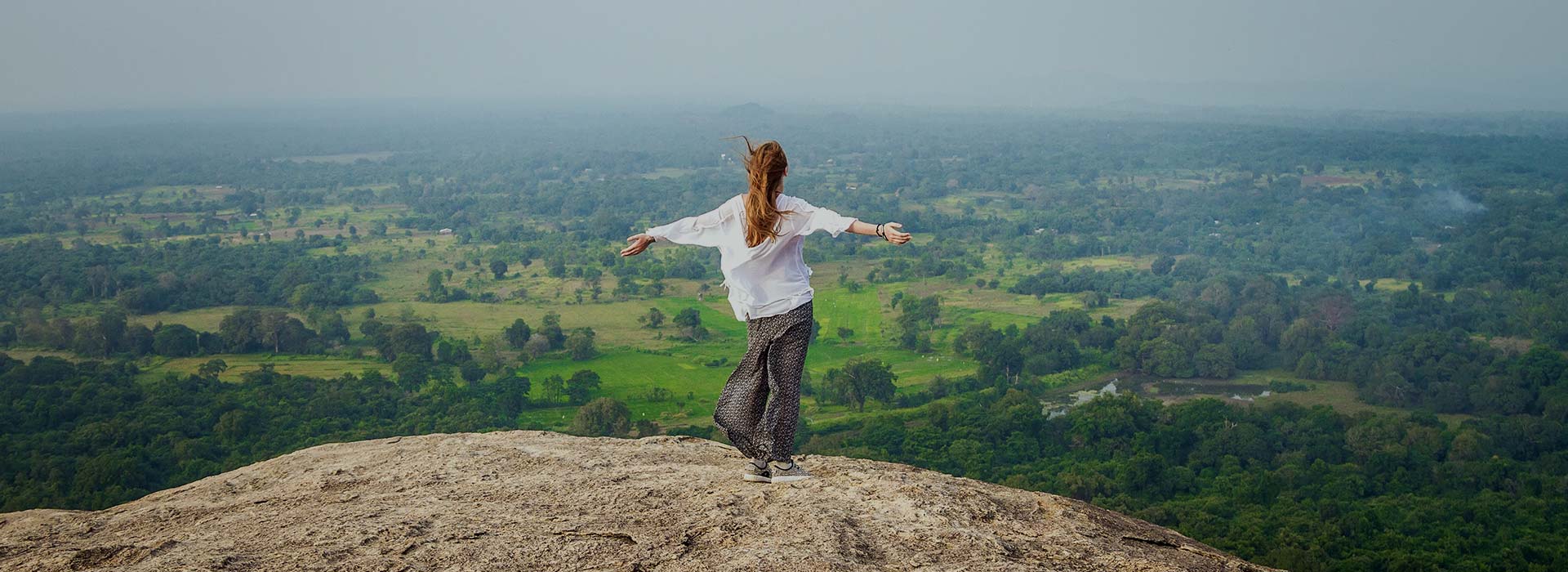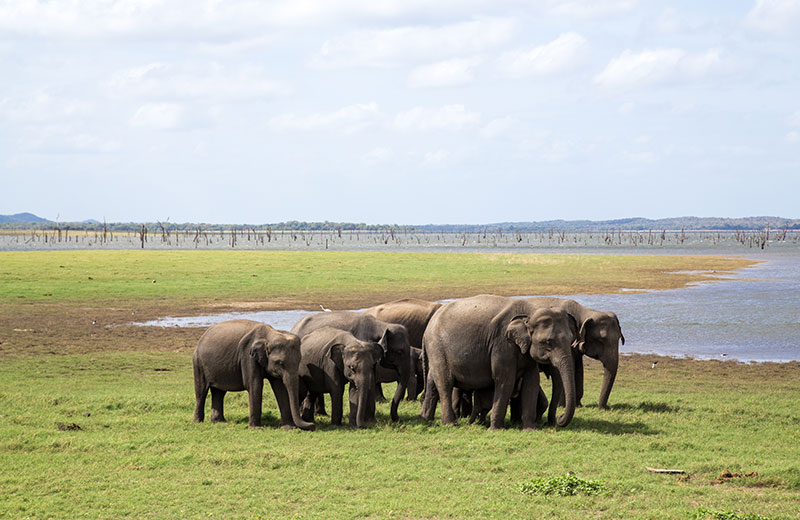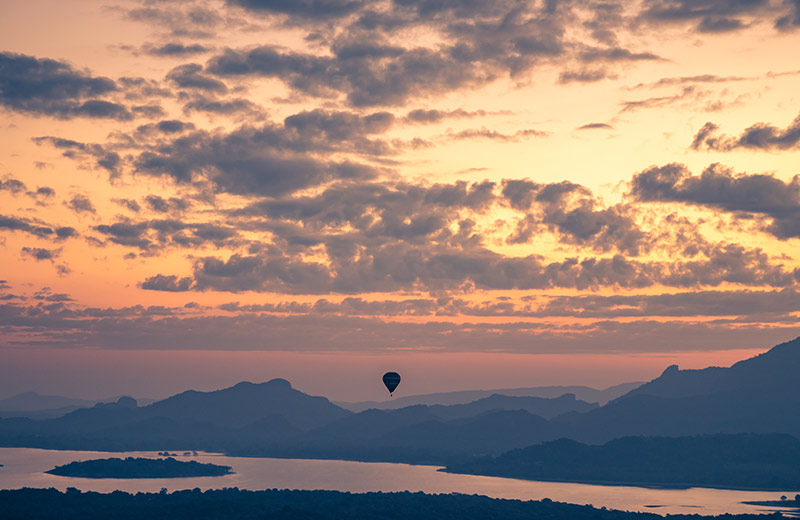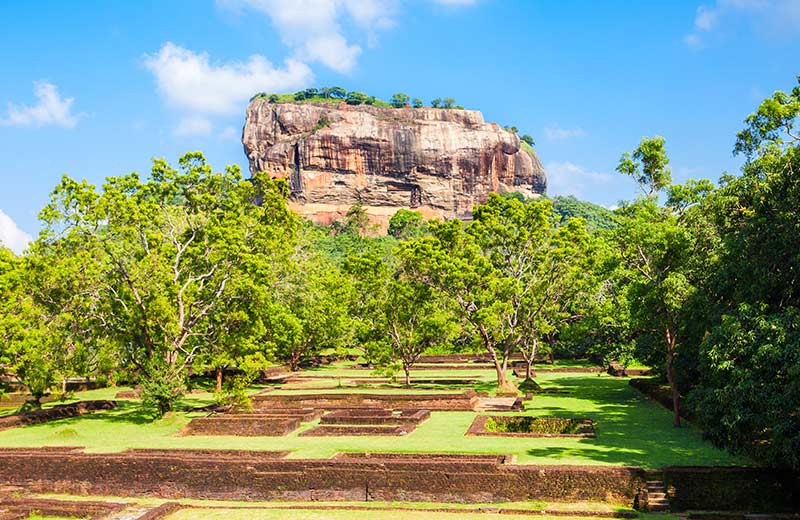Pidurangala
Standing at 500m off the ground, Pidurangala is the Lion Rock’s lesser-known neighbour, but it, too, has an intriguing history of its own. Back when King Kasyapa built his Sigiriya citadel (5th century CE), he had a dilemma on his hands. The rock had been a monastery for centuries, with monks living in the many caves (which you can spot at the boulder gardens) in it.
A Domain for Monks
Pidurangala seemed to hold the answers, as the rock formation had been housing monks since the 2nd century CE, and so he had the monks move to the Pidurangala Viharaya instead. Despite being older by centuries, it wasn’t until Kasyapa showed up that Pidurangala attained much prominence. During his reign, he had the Viharaya refurbished and expanded to house the monks.
Why You Should Visit
The climb to Pidurangala’s summit is quite a bit tougher than Sigiriya, but it’s also worth the effort as it’s a gold mine for flora and fauna, as well as ancient artefacts. There are boulders along the path that require you to make your way around (or over) them, and small gaps to squeeze through, but once at the top, you’d be treated to a panoramic view of the area, as well as a clear look at Sigiriya’s summit!
The temple itself is a sight to behold. It hosts a reclining Buddha statue, a true work of art, which is one of the largest of its kind in existence, among other intriguing artefacts. You could also explore the meditation spaces that remain intact in and around the temple.
Of course, it’s only advised to make the hike if you’ve got experience in doing so, or else it could be a tad tedious. If you’re still eager to make it to the top, consider requesting a guide to accompany you.



